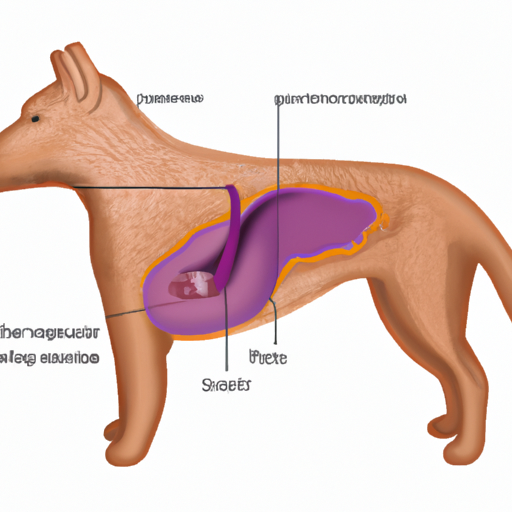Understanding Your Dog’s Anatomy
Your dog’s pancreas is a vitally important organ situated in their abdomen, near the stomach and small intestine. It’s a small, slim organ that you might not think about often, but it plays a significant role in your dog’s overall health. Its primary functions involve digestion and regulating blood sugar levels.
Locating the Pancreas
Right behind your dog’s stomach, nestled in the first curve of their small intestine, that’s where you’ll find the pancreas. It’s not an organ you can feel through your dog’s skin or see without advanced imaging, but it’s there, working hard every day.
The Functions of the Pancreas
The pancreas is a multi-tasker, performing two crucial roles:
1. Digestion: It produces enzymes that assist in breaking down proteins, carbohydrates, and fats.
2. Regulation of blood sugar: It secretes insulin and glucagon to maintain balanced blood sugar levels.
Understanding Pancreatic Diseases in Dogs
Unfortunately, dogs can suffer from a range of pancreatic diseases. Some of these conditions include pancreatitis, diabetes, and pancreatic cancer. Symptoms of pancreatic diseases can be subtle, so it’s important to monitor your dog’s behavior and health closely.
| Disease | Symptoms |
|---|---|
| Pancreatitis | Vomiting, loss of appetite, diarrhea |
| Diabetes | Excessive thirst, increased urination, weight loss |
| Pancreatic Cancer | Loss of appetite, weight loss, vomiting, diarrhea |
Protecting Your Dog’s Pancreas
You, as a caregiver, can take steps to protect your dog’s pancreas. A balanced diet, regular exercise, and regular vet check-ups can go a long way towards maintaining your dog’s pancreatic health.
FAQs
Q: Can I feel my dog’s pancreas?
A: No, you can’t feel your dog’s pancreas through their skin. It’s located deep in their abdomen.
Q: What can cause pancreatic diseases in dogs?
A: Pancreatic diseases can be caused by a variety of factors, including poor diet, obesity, and genetic predisposition.
Q: Can pancreatic diseases in dogs be cured?
A: Some pancreatic diseases, like pancreatitis, can be managed with treatment. Others, like pancreatic cancer, can be more challenging to treat.
Q: What should I do if I suspect my dog has a pancreatic disease?
A: If you suspect your dog has a pancreatic disease, you should consult your vet immediately. Early detection is key to effective treatment.



